For most travelers there comes a point when they’re thinking to themself, whether it’s possible to pack lighter or not.
Maybe before the trip even starts when realizing the extra costs of flying. Or the merciless gravity after reaching the 5th floor in a random building far from home.
And if you’re a backpacker, you maybe realized everything went well until you couldn’t fit your baggage in the locker at your hostel.

Once I traveled for 3 weeks through Europe with a small 32-liter backpack considered a personal item by most airlines.
I even found space for a roman soldier costume (XXL), and a large Bluetooth speaker attached on top.
My point is that without packing light I’d never have succeeded with such items on board.
Meaning no dancing at a local street party on a night out in Palermo (Italy) with a blasting speaker hanging around my shoulder.
But that’s a story for another time…
I guess you’re already here because you’ve found enough reasons to travel light. So let’s just quickly reframe some of the benefits you can gain from it.
📖 Table of Contents
- Best Reasons to Travel Light:
- Top 19 Tips on How to Pack Light (Step-By-Step)
- Mindset
- What to Pack
- 3. Invest in Lightweight Luggage
- 4. Buy, Rent, or Get It Shipped
- 5. Check What’s Included With Your Accommodation
- 6. Skip “Just in Case” Items
- 7. Lightweight Clothes and Accessories
- 8. Choose Travel-Friendly Fabrics
- 9. Multiple-Purpose Items
- 10. The Headphone Situation
- 11. (Refillable) Travel Containers
- 12. Replace Your Book With a Kindle, Audiobooks, or Podcast
- 13. Travel Toothbrush
- 14. Repack Into Smaller Containers
- 15. Use Compression Packing Cubes
- 16. Leave the Cards You Don’t Need at Home
- How to Pack
- How to Decrease Flight Luggage Expenses
- How To Weigh Your Luggage at Home
- It Takes Practice
Best Reasons to Travel Light:
- Save money on baggage fees (and things you may skip on buying pre-travel)
- More freedom with increased mobility and comfort
- You won’t be limited to certain types of transportation
- Decreased risk of injury
- Less baggage makes you blend more in with locals decreasing the risk of getting scammed
- Compatibility with more lockers decreases the risk of theft
- It’s easier to pack and unpack
If these reasons motivate you you’re in for a treat.
Top 19 Tips on How to Pack Light (Step-By-Step)
These tips I’ve mostly gathered from personal experience through sweat and burned calories. But also from spending many hours researching the art itself.
To live up to the hype of being a final guide, I’ve divided each of the tips into three primary categories:
- Mindset
- What to pack
- How to pack
Mindset
1. Just Because It’s an Option, Doesn’t Mean It’s a Good Idea
Travel this. Travel that.
An important thing to keep in mind is that as a traveler you’re seen as a valuable asset to many businesses, trying to convince you to invest your hard-earned money in their products.
This goes for websites and blogs recommending your products too.
And some of the products and services are worth it. But many aren’t.
If you were to buy all travel accessory ideas out there you wouldn’t go very far. At best you’d look like me carrying the large blue backpack in the last photo.
It’s easy to fall in love with new shiny objects and forget to ask the important question of why. I’ve been guilty of this so many times.
So give yourself the mental vaccine against consumerism, and invest your energy in a more productive manner, such as planning your actual trip.

A good example of this is power banks. Many people swear on them.
In some cases, they’re crucial. For example, if you’re hiking in rural areas, or your professional equipment depends on it.
But for the average traveler, they’re not, even though it easily seems like a good idea.
Powerbanks usually weigh a “ton”. It’s like carrying around a tiny Tesla. And most phones will not run out of power before you get the chance to charge them again at the end of the day.
On top of that using a laptop is a good alternative. Even if you’re hiking from point A to B with all your gear.
I rely on my tiny lightweight MacBook Air (2021) which I usually travel with. It can charge my iPhone X Max 3-4 times in case I end up needing it.
2. Challenge Your Beliefs
We’re all familiar with the “why didn’t I think about that” moments we can have from time to time. Usually when people around us share insights from their unique perspectives.
It’s really easy to convince ourselves once we decide on something, or attach ourselves to an appealing idea, that we can’t do without.
Also the habits we build in our everyday life can be strong, this includes certain standards on how we prefer and do things. Especially when we’re home in everyday life.
And when we’re unwillingly challenged and separated from all of this, the experience can often be summed down to something like “that wasn’t that bad” or even better “that was great!”.

In regards to packing light, this often covers the nice-to-have vs need-to-have things. This is also a topic we’ll go more in-depth with later in the guide, and how to practically approach it.
A quick example of this is when it comes to footwear.
Many of us have a unique pair for specific things. Such as for everyday life, rainy weather, running, hiking, etc. And before we know it these multiple options become our standard.
I only bring two pairs of shoes when traveling (besides flip-flops sometimes). One pair is the clean everyday sneakers I usually wear when going out. The other pair is my all-in-one shoes for rainy weather, running, and hiking.
This is possible because I found a pair of waterproof hiking shoes (Ecco Exostride M), which are also comfortable running in.
It doesn’t have to be labeled a running shoe to necessarily be suitable for that. While it’s probably not Usain Bolt’s first pick, it will still do just fine for the average runner.
What to Pack
3. Invest in Lightweight Luggage
First things first.
Having a light fundament is the best way to start.
It can get a bit silly if you’re saving a pound here and there if your luggage would be heavy enough to survive 12 rounds in the ring with Mike Tyson in his prime, or 7 rabies-enraged stray dogs thinking you’ve robbed the nearest butcher.
Most brands show the weight of their backpack due to the importance of this. And if it’s lightweight, the shop you browse will most likely make sure to brag about it too (so will the price tag).

How To Find the Right Lightweight Luggage:
- Go with the one that fits your needs. Whether it’s a suitcase or backpack. As my example revealed earlier, chances are you don’t need as many liters as you think.
Many people travel the world with only check-in luggage (40-45 liters). Though ultimately this depends on many factors. Including the weather of your destination, activities, and your personal preferences. - Pick the lightest one that matches your budget.
Paying for very little or less weight can increase the price tag a lot, and sometimes lessen the durability too.
So if you’re budget aware and not a serious hiker, you might want to reconsider going for the absolute lightest. - If you’re buying a backpack, consider getting one with a built-in daypack if you need to.
Don’t be afraid to try different ones to find the ones that fit you the most. The variety here can be big, even within the same brand.
Even if some backpacks are big doesn’t mean they’re comfortable wearing when they’re heavy.
4. Buy, Rent, or Get It Shipped
If you’re packing items that you can buy at your destination for a fair price, consider packing them in the first place.
One of the convenient results of the globalized world is the access we have to most goods in most places. Whether we buy or rent.
You also have the opportunity to buy online at your destination, you don’t need to be a citizen of a country in order to do so. And as a last resort, you can ship items to your destination from home.
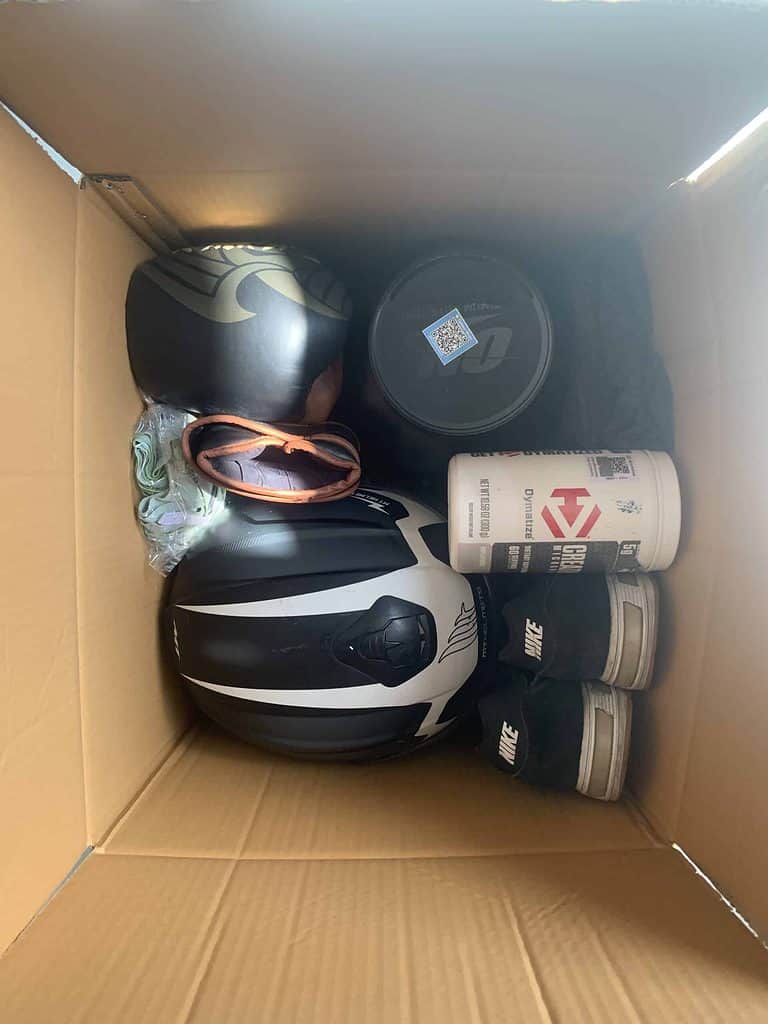
It’s often easier and cheaper to bring your items yourself, but if you’re traveling for a longer period to several locations, getting items shipped can be the best option.
Though be aware of potential toll fees and import taxes, and limits on what you’re allowed to ship. Many times it requires that a fee is paid by the receiver, so make sure to plan this accordingly.
5. Check What’s Included With Your Accommodation
This can potentially save you a lot of time, space, and weight.
To find what’s included you often don’t have to look far. If you made your booking through a website, I advise you to check there first.
If not, you can always make a quick call to your accommodation, or send them a message through one of their social profiles, this is sometimes the easiest and quickest way to get a response.
Examples of commonly included items:
- Toiletries such as shampoo, shower gel, and body lotion
- Hairdryers
- Cotton swabs
- Toothbrushes and toothpaste (though the quality may vary)
- Slippers
- Bathrobes
6. Skip “Just in Case” Items
This is a really big one.
I’m not referring to items for an emergency such as first aid or medicine. You should always make these things a priority, and keep medicine in your carry-on luggage.
But all the less important stuff. Such as a mega-maxi-dynamic-carbon-robot-tripod-self-portrait-stand. You know, just in case you end up on the summit of a mountain alone before sunrise and want to take a selfie.
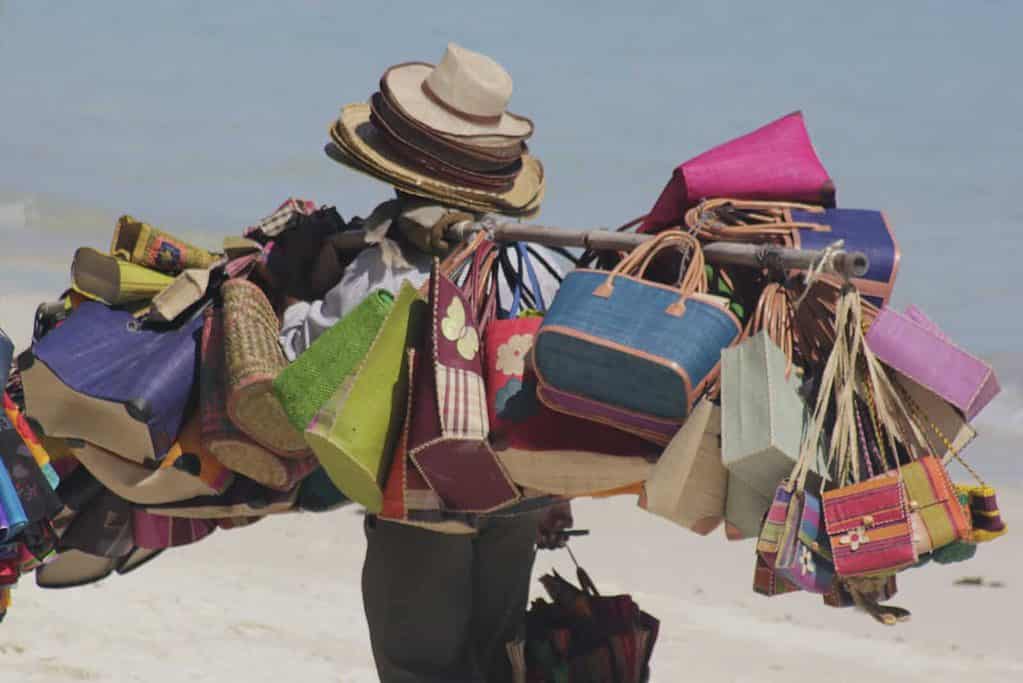
Ultimately I can’t tell you what are just-in-case items or not, since that’s up to your personal preferences. But what I know is, that most of us have experienced bringing something on a trip that we ended up never using.
There’s a reason behind the rule of thumb advice of “Lay out all of the things you think you need, and cut it in half”.
And in case you do need it, think of the last step – you’re most likely able to buy (also online), rent, or in the last case get it shipped to you.
7. Lightweight Clothes and Accessories
Now it’s time to get se-ri-ous.
Choosing light clothes and accessories is one of the best ways to save weight on your luggage.
While you might don’t want to get a new wardrobe only for traveling, choosing the lightest and least bulky you have can get you far.
Light Footwear
If you’re a fan of buffalo shoes you’re not gonna like what we’re about to talk about.
Choosing light footwear is a big opportunity. Some shoes would be lethal if they fell from anything above the 4th floor. While others you’d prefer any day over a medium-sized bird digested meal.
A lot of times runnings shoes are lightweight. And as we briefly covered earlier – just because they’re sold as running shoes, doesn’t mean they’re not comfortable for everything else than running too.
Often it’s about not letting powerful marketing play tricks on your mind. The same goes for shoes.
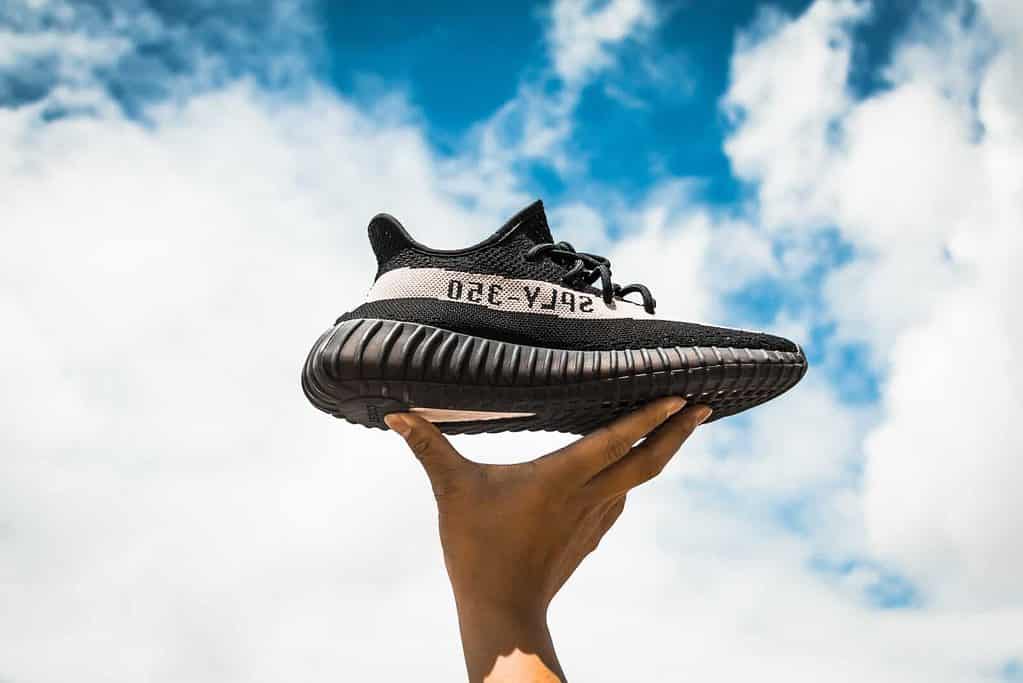
Hiking Boots vs. Regular Shoes
I never travel with boots. And at home, it’s only the weather that influences whether I wear them or not.
If you’re not going on a multiple-day expedition far away from civilization, in rain or snow carrying a heavy backpack. Then you’d most likely be fine with regular comfortable sneakers.
The weather and the weight of your backpack are the most important factors. But if your backpack isn’t exceeding 20% of your body weight you most likely will be fine (I’ll show you how to calculate this later with my free interactive travel packing list template).
And if you’ve previously had incidents with your ankles, it’s possible to do some ankle exercises before your trip if you’re motivated to do so.
Fleece
For example, switching your hoodie out for a lightweight fleece can be a “wow” experience. While the volume is not where you’ll save the most, you’ll certainly save weight.
The average hoodie weighs between 16-25 ounces or 453-708 grams, meaning you can easily double or triple the weight with a fleece.
My to-go fleece is from Columbia (brand) with their Omni-Heat reflective technology. Similar to those survival blankets that look like tin foil converting humans into burritos.
But there’s no need to overcomplicate this, most fleeces will do just fine.
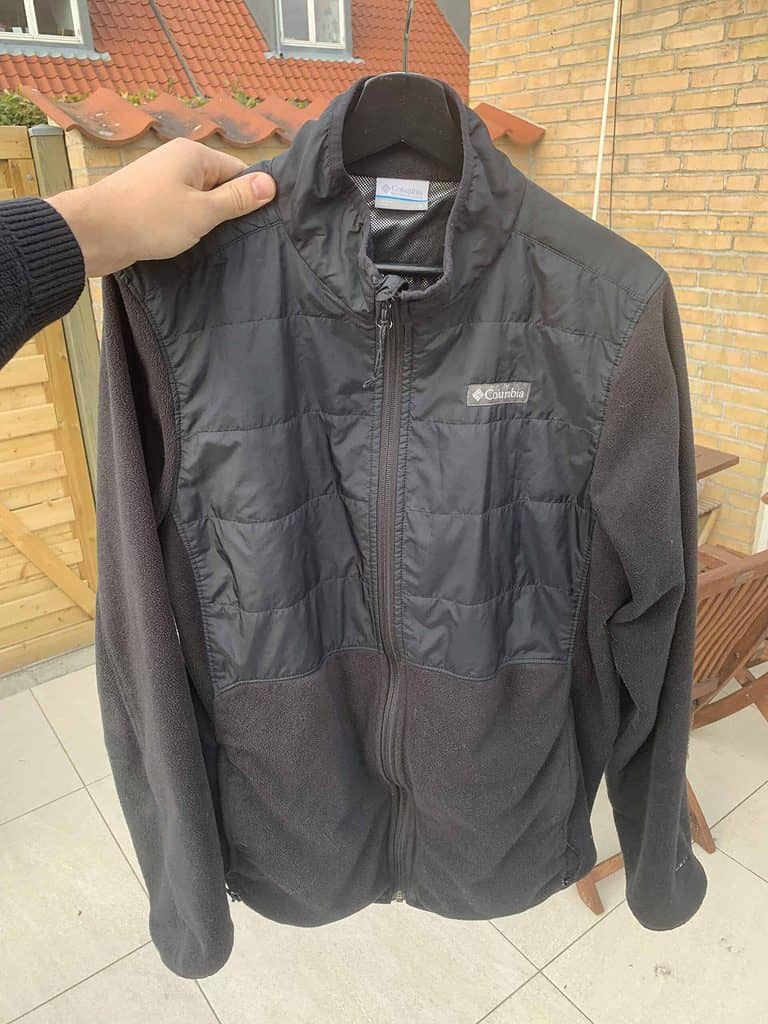
Compact Lightweight Jackets
Accompanied by a fleece, a good quality light jacket can do wonders against colder weather. I think most people would be amazed at how warm the combination can be.
My large-sized Patagonia Nano Puff jacket only weighs 10,6 ounces (300 grams). Which is approximately equivalent to two average t-shirts in weight.
And among all the other positive things I could say about this jacket, is that you can pack it into a small cube by using the left pocket.
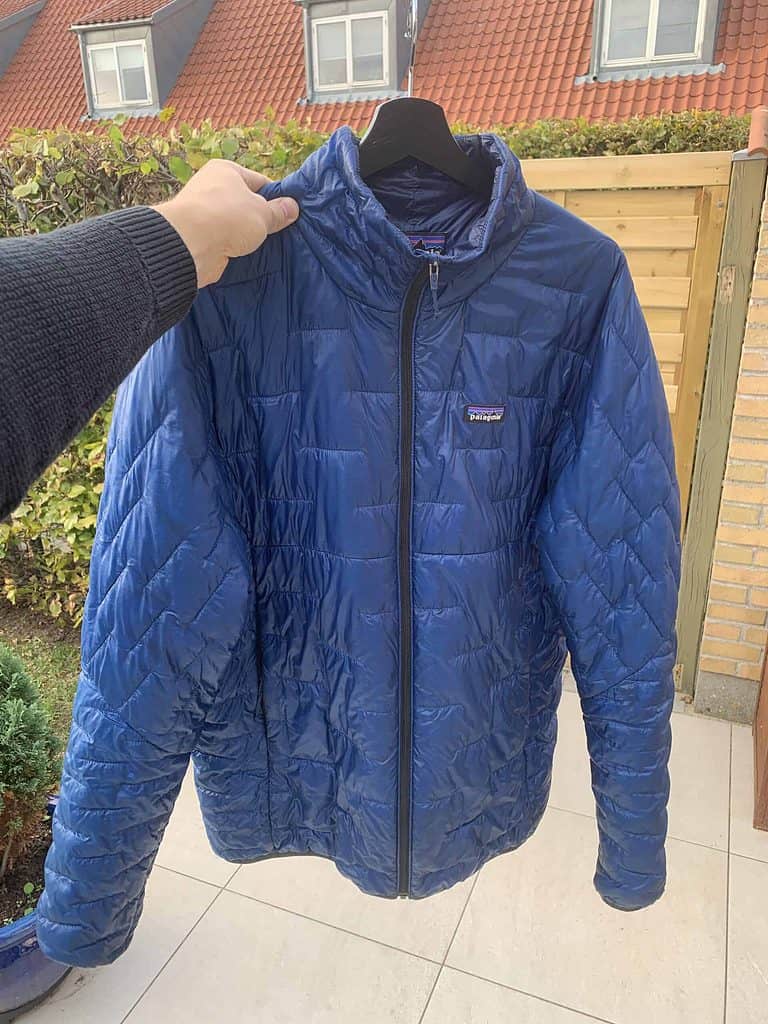
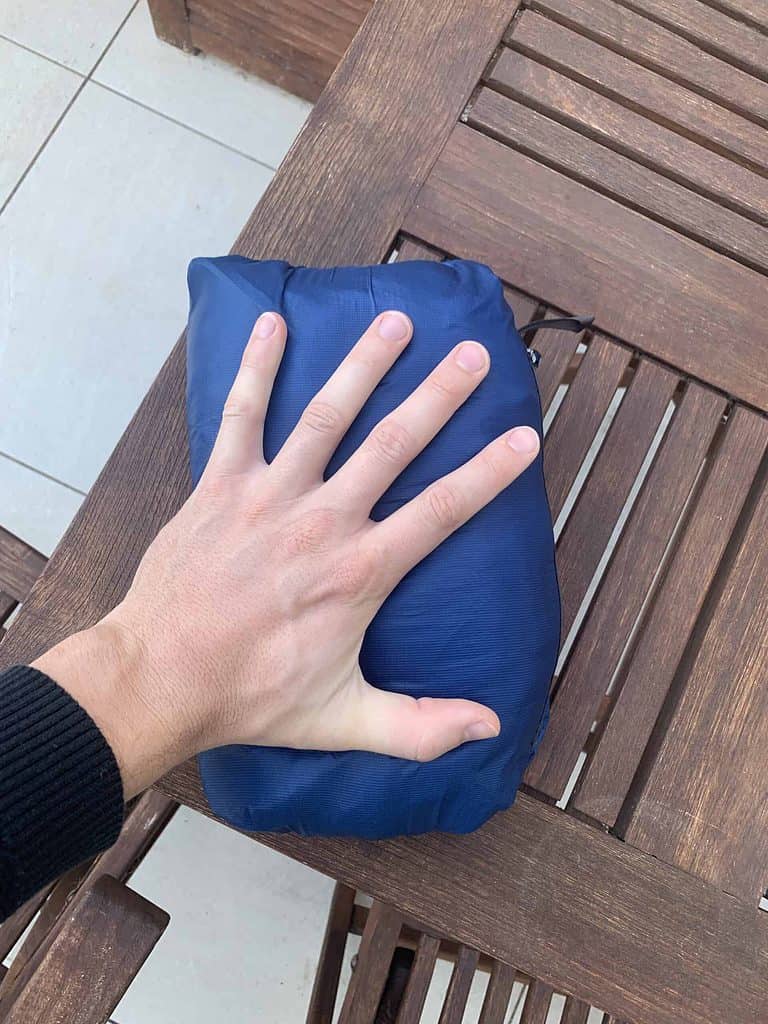
8. Choose Travel-Friendly Fabrics
The last step was to focus on the weight or volume of your clothes. Now we’re talking about something else.
Let me explain…
The best travel fabrics after weight and volume are a combination of how long you can wear them before it needs to get washed, and on how many different occasion.
Meaning doing more with fewer items.
Recycled Fabrics
Among the less-known options come the yet modern recycled fabrics such as REPREVE and ECOVERO. REPREVE is used by many major brands such as Nike, H&M, Under Armour, etc.
The main reason I’m mentioning these is not that they’re environmentally friendly. Though it’s a huge bonus strongly aligned with the traveling spirit.
I do so because they’re found in some of the most lightweight, comfortable, and durable clothes on the market.
A good example is my favorite jeans (Shaping New Tomorrow’s Essential Slim Pants) which are made of 67 % REPREVE recycled polyester, 29 % Ecovero, and 4 % elastane.
Here’s a size comparison with a cap:
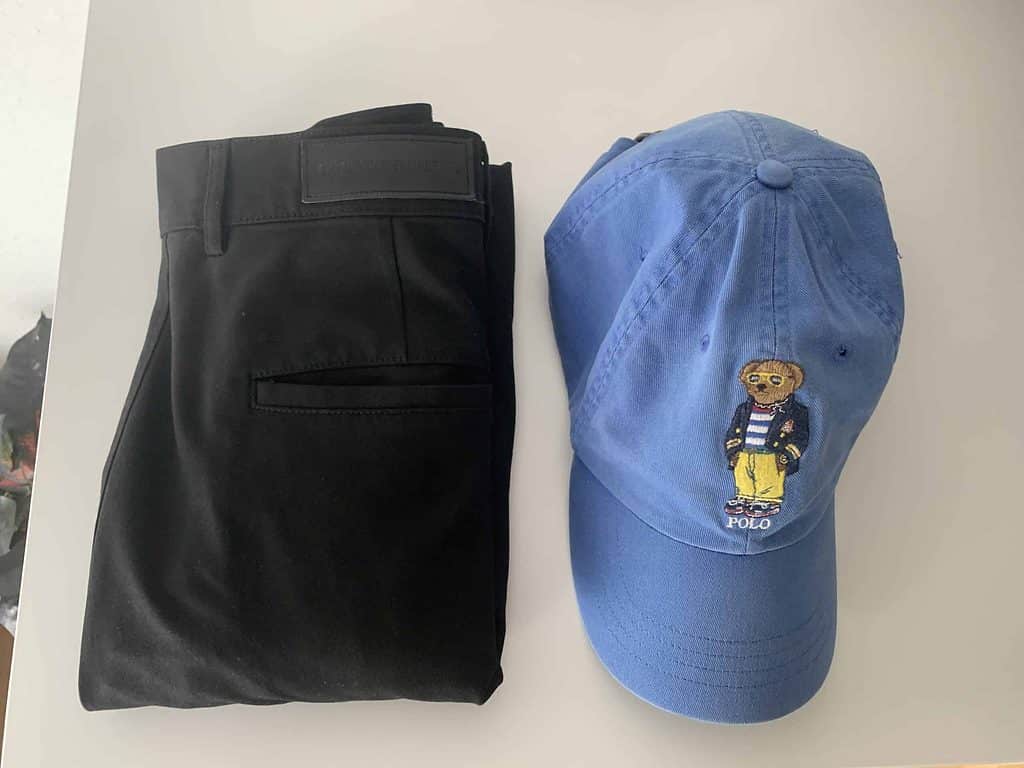

The quality and features are like nothing I’ve ever seen before:
- Lightweight (0,93 lb / 420 grams in size 34/32)
- Water repellent and quick drying due to nano-properties
- 360 degrees stretch
- Wrinkle free
- Breathable
To sum it all up, there’s not much these pants can’t be used for. It’s comfortable enough for long-haul flights. Practical enough for hiking – even in moderate rain. And stylish enough to wear on a night out.
So not only is the fabric optimal – chances are you wouldn’t have to pack more than one or two pairs of these types.
This means they’re also qualifying as a multi-purpose item (we’ll go more in-depth on this topic in a second).
Merino Wool
This impressive natural fabric is one of the most adaptable, it:
- Lightweight
- Both warming and cooling due to Thermo regulating properties
- Odor resistant
- Quick drying
- No itching increases comfort
I recommend buying cruelty-free merino wool to decrease the risk of animal abuse. And if you’re vegan, the best alternative is often considered Bamboo fabric due to the many similarities.
All my socks are bamboo (excluding mom’s homemade knitted socks). They’re warm, comfortable, and unbelievably durable even in a thin layer.
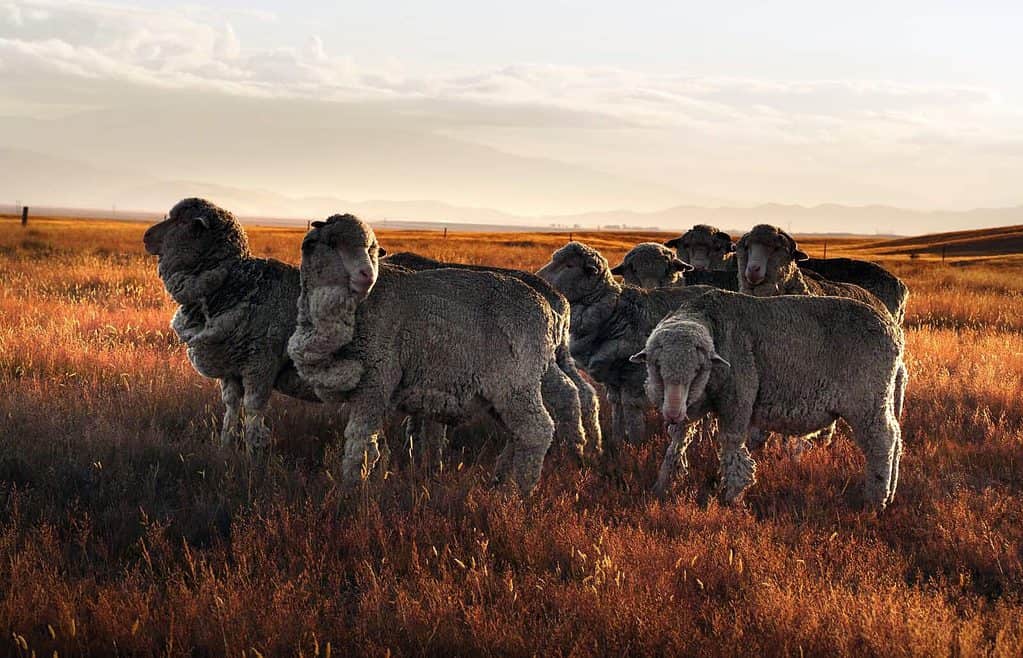
9. Multiple-Purpose Items
Get ready to hit one stone with two birds. Or is it the other way around?
Chances are that you already own some multiple-purpose items. And maybe more of them than you’re aware of.
Examples of Multiple-purpose Items:
| Item | Can also be used as |
| Buff/Bandana | Scarf or hat |
| Fleece/Top | Travel pillow or night mask |
| Jeans (a single pair) | In the right materials, they can be used for everyday life, relaxing on flights, hiking, rainy weather, etc. (as mentioned earlier) |
| Raincoat | Ordinary jacket (most likely as an outer layer) |
| Roll-up jeans, shorts, and shirts | Now you have short-and long sleeves in one |
| Shorts (a single pair) | Also, with the right fabric, they can be used for everyday life, exercising, swimming, etc. |
| Spork | The infamous piece of cutlery that works as a spoon on one end, and a fork on the other |
| Waist bag/Bags | Phone holder for any table for example on flights |
Feel free to add more to the list by leaving a comment at the end of the guide. Then I’ll add it ASAP.
And referencing the “Mindset” chapter at the beginning of the guide, remember that our opportunities are often a matter of perspective, which can be blocked by current habits and standards.
Choose Tactical Colors
Not to be confused with a uniform – but choosing colors that are optimal for traveling.
Among these are neutral colors that are easy to mix – as long as it’s not easily stained.
If it’s easy to stain it will also make washing more complicated. And when traveling you most likely won’t have enough white clothes with you for a full wash.
This would make your on-the-go travel laundry more complicated than it can already be.
10. The Headphone Situation
Buying quality over-ear headphones can be pricy. But bringing them on a trip can even make them a bit pricier when it comes to weight and volume.
The over-ear headphones are also bulkier and have to be stored in a bag or carried by hand, which makes it less convenient during getting on and off transport.
I know you have to be very privileged to think this far. First-world problems at their best.
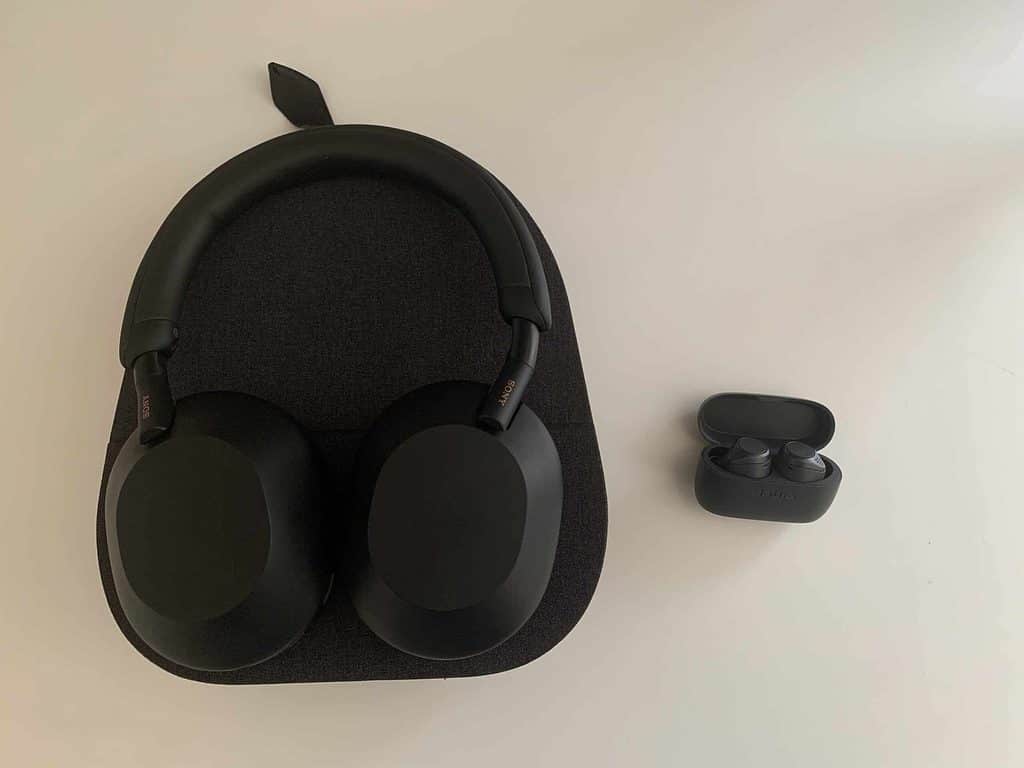
The weight comparison is from everything you see in the photo including covers.
It’s worth mentioning that these over-ear headphones are Sony’s already top-of-the-line lightweight WH-1000XM5.
So if you’re the owner of an older pair, they might be even heavier.
And the earbuds are Jabra’s Elite Active 75.
The Sony headphones are more comfortable and offer better audio quality among others. I mainly use them for my everyday stationary work and calls.
But I’d probably not bring them on longer trips with a lot of traveling from A to B, where the cons most likely outweigh the pros.
Ultimately, it comes down to what’s else you’re packing and personal preferences. Either way, it’s an excellent option to be aware of.
11. (Refillable) Travel Containers
This is a popular one. And not only for the sake of passing security when only traveling with carry-on luggage.
Though I recommend buying what toiletries you can at your destination, such as shampoo, body lotion, etc. sometimes there are things we have to bring.
If you’re very dedicated – most likely because of a longer trip carrying a backpack, you can buy travel spray containers for perfume too.
Though I have to be honest, it was a bit messy filling up the empty travel perfume container from my original one. And it only lasted for a few months before it started to leak a bit.
But I’m positive that it is possible to find a quality one. Amazon has several options.

The alternative is to buy an actual travel-sized perfume, which Chanel for example did a great job doing with the one above which I own myself.
It’s mainly made of plastic with a glass container. This is what you want compared to a full glass container more heavy and prone to get damaged and leaking.
12. Replace Your Book With a Kindle, Audiobooks, or Podcast
Let’s just make a quick comparison.
Barack Obama’s latest book “A Promised Land” in hardcover weighs 2.48 pounds (1.23 kilos). And the Amazon Kindle is only around 5,57 ounces (158 grams).
If budget isn’t an issue, the best alternative to simulate a book is the Kindle. This would give you access to a digital and dynamic library wherever you go.
The cheapest one is a little under $100 at the time of writing.
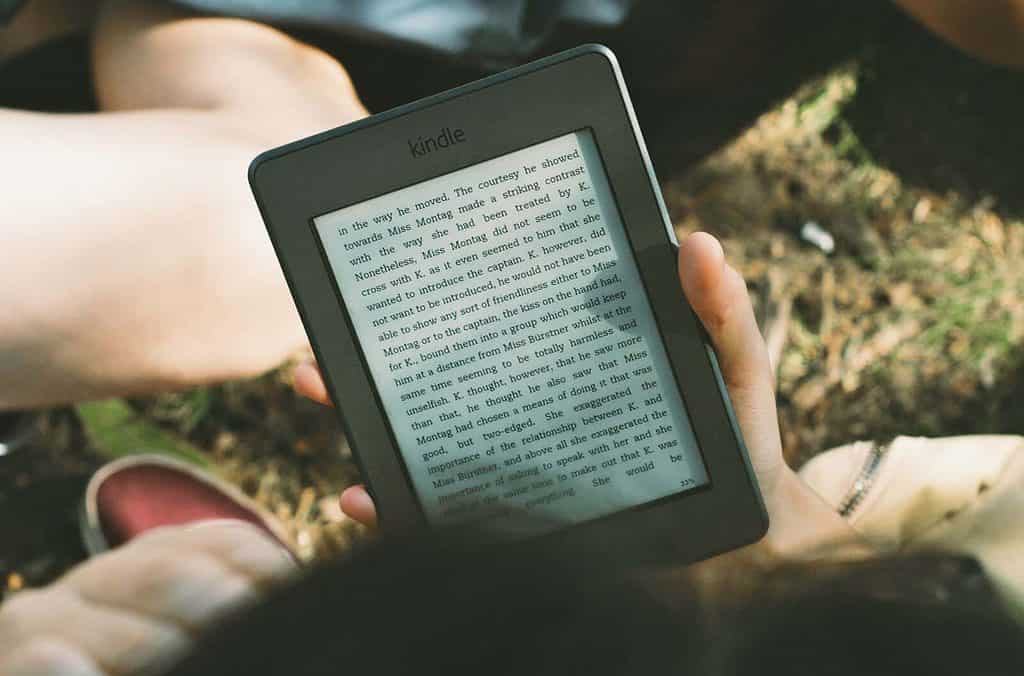
But if you want to go the lightest and cheapest way, choosing audiobooks over the two is the best option.
Audible which is also owned by Amazon (surprise!) is my to-go app for listening to audiobooks.
And if you just want something to listen to while getting either educated, entertained or both, podcasts are also a great option.
13. Travel Toothbrush
On my last long trip, I decided to go with a manual toothbrush to go lighter. My electric toothbrush at home is pretty heavy, and the travel case that it came along with could be used as a brick. Without forgetting the charger too.
But after a while, I noticed that plaque started to build on the backside of some of my teeth, no matter how much I tried to get rid of it.
That’s when I stumbled upon my first edition of a travel toothbrush. The mighty Oral-B Cross Action Power Dual Clean. It only weighs 1.6 ounces (45 grams) and goes for a little over $6.

And you can buy new brush heads for it too. The low price might give the impression of the opposite.
What’s even better about it is, that it runs on AA batteries, and does so for a long time before you need to change the batteries. Meaning that you don’t have to carry a charger, or think about charging it when you’re on the move.
It even took me around 2 months to drain the no-name battery that came with it.
14. Repack Into Smaller Containers
This applies to many things.
Everything from toiletries, medicine, supplements, snacks, beverages, etc.
Examples from my backpack:
- Instead of carrying around full packages of electrolytes, paracetamol, ibuprofen, and antihistamines, I cut out equivalent to a few emergency doses
- For backup tape when carrying camping gear, I wrap a bit of tape around a pen instead of bringing the whole roll
- And a few cotton swaps in a zip-lock back along with a small bottle of Iodine for cleaning blisters or wounds.
If you’re planning on traveling with medicine or supplements, you might want to keep it in the original container, especially if it’s in white powder form. Depending on where you’re traveling.
Getting longer down on the list I know these examples are minor, but if you have a lot of different items it can add up. Especially regarding volume.
15. Use Compression Packing Cubes
The last zip-pull on these bad boys can be quite satisfying if you’re pushing them to the limit.
And not only are they doing a good job of decreasing the volume of your clothes. They also make everything more organized. Especially if you’re traveling with a backpack.
I also use them for other items than clothes. There’s no need to limit yourself.
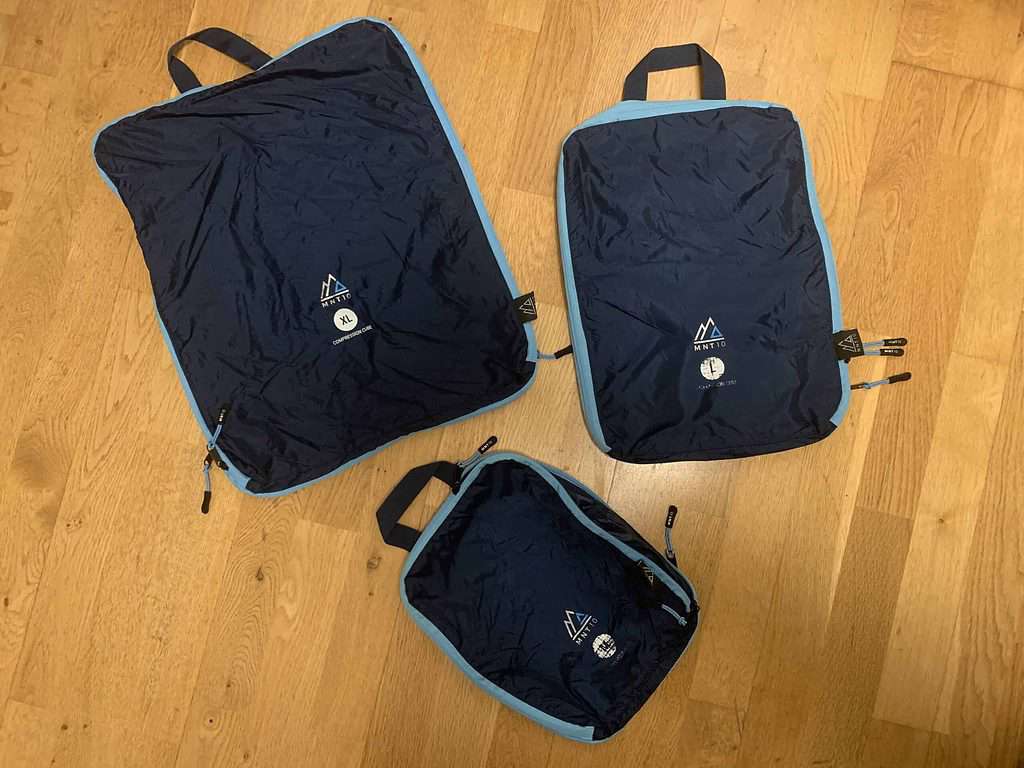
16. Leave the Cards You Don’t Need at Home
As the last step on the list of what to pack, let’s make it small yet not always insignificant.
It’s time to let your wallet go on a diet.
Before going on a trip, remove all the cards you know you won’t need. They’re unnecessary, and you have nothing to gain from packing them.
And if you’re unlucky enough to lose your wallet, you avoid the pain of retrieving new cards from everywhere. And fees that might come with it too.
How to Pack
Now that you know what to pack, let’s get to how you do so.
We’re not gonna go into detail on the practical planning aiming to become a state champion in luggage Tetris.
This is a whole other art itself.
But we’re going to:
- Get an idea of how many items you need
- Create an overview
- Trim down the list until it matches your personal preferences
Let’s get started.
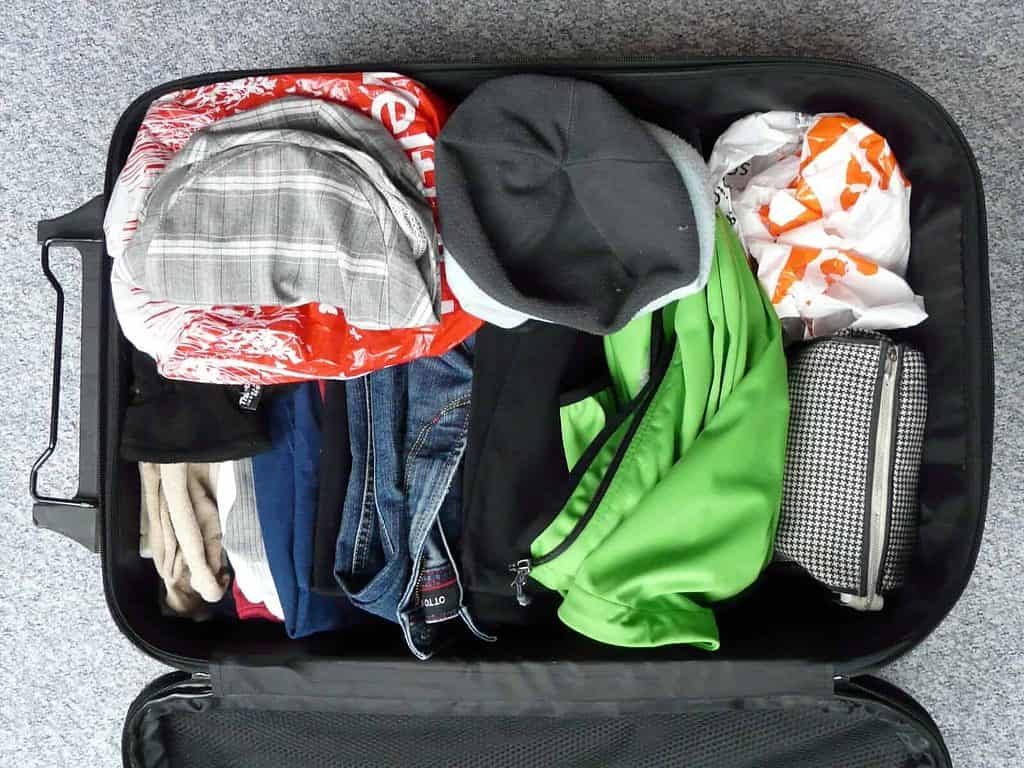
17. Think in 1-Week Cycles
This is pretty straightforward.
If you’re able to do laundry weekly, there’s no need to overpack.
Though I prefer having a few extra pairs of underwear and socks, which carry big importance – especially compared to the size and weight.
18. Make a List and Calculate the Weight (Optional)
While making a list is not necessary, I guess you’re here because you’re interested in getting your baggage as light as possible.
A list can help you get a glimpse of whether you should be able to size down or not.
And weighing your items also gives you an x-ray vision. Making it easier to actually grasp what’s taking up weight, so you can easier identify what makes sense to get rid of.
You might even want to calculate the weight of your items too. Especially if you have a long trip ahead of you, with different climates and activities.
Another good argument for doing so is obviously to make sure you’re not forgetting anything.
And I’ve helped you a bit on the way to creating the best list possible.
My Smart Travel Packing List With Weight Calculation (Free Template)
The good news is that I’ve already created a packing list template for you.
And no, you’re not required to give me your email or anything else in exchange.
It’s not just an ordinary packing list with a fancy design. The design is actually what could be considered non-existing by most people. It’s much more than that (I’ll explain more in a second).
I’ve also written a short guide explaining its features and how to use it in the link below.
There you’ll also find the direct download link to make a copy (Google Sheets):
I suggest you read the last bit of this guide before proceeding to the tool since there are still some important steps left you don’t want to miss out on.
So what’s unique about it?
If you’re entering:
- Your body weight (if you’re traveling with a backpack)
- The weight of your empty carry-on and check-in luggage
- And your airline’s weight limits
It will automatically calculate and show you how much weight you have left while filling out your list (if you enter the weight along with your items too).
And if you’re traveling with a backpack, it also shows whether you exceed the recommended weight limit based on your body weight.
I have yet to find any tools out there that do this exact thing, hence why I created it for myself and now sharing it with you too.
As mentioned earlier – if you’re going on a world trip in various climates and attending different activities, the only way to not overpack is probably to do it methodically.
Either way, keeping your baggage as light as possible will give you a more enjoyable trip. Period.
19. Nice to Have vs. Need to Have
Once you’ve made your list, it’s time to see if you can trim it a bit.
What I like to do is highlight the nice-to-have items. No matter how painful it can be realize that what you hoped to bring might is best left at home.
And as at the beginning of the guide, remember that just because it’s an idea doesn’t mean it has to be a good one.
Let’s go through some nice-to-have examples from my own experience:
Backpack Transporters
When I bought my current backpack (Osprey Aether Plus 70), I couldn’t imagine checking it in without protecting it first. What a careless monster I would be.
But on the 3. flight I got proved that it was probably a waste of money, weight, and volume.
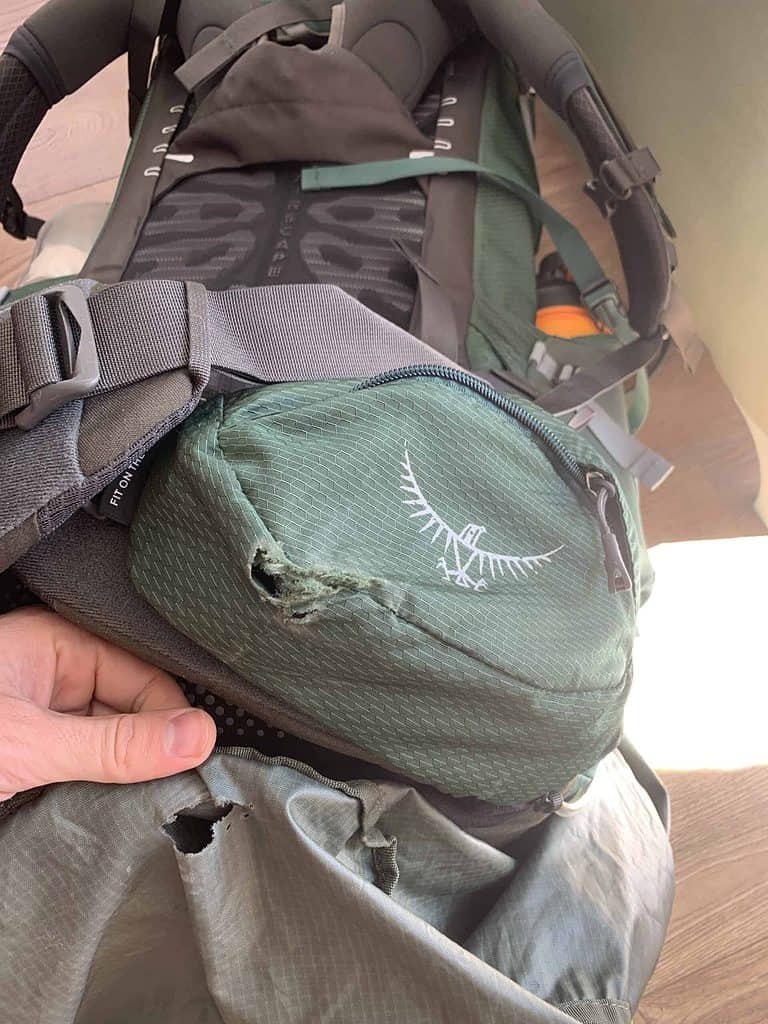

Especially when everything went fine on the following flights without it. Maybe that’s why a lot of people don’t rely on them either.
Just make sure to tighten in straps and loose ends as much as possible.
Cameras
If photography is your passion just ignore this.
But if not, you’re most likely gonna do just fine with your phone’s camera.
Most smartphones take stunning photos and videos these days. Especially the newer ones, such as the iPhone 13 Pro series introducing their cinematic mode, adding big screen vibes.
Portable Laptop Stand, Mouse, and Keyboard
Like with everything else it comes down to personal preferences. And I know many choose this for better working ergonomics and to support a better posture.
I’ve been traveling around with this, and I always ended up just using my laptop due to the limited options of working on the go anyways.
I should add that I’ve never been using common workspaces while being abroad, and I’m not the Starbucks kind of work guy either.
But even if you are, I’d say there’s might still a chance that it’s not worth it.
Powerbanks
I’ll skip elaborating on this more in-depth since I already did that at the beginning of the guide.
Travel Towels
If you’re not traveling on a shoestring budget or planning on camping, you can most likely skip this. At most accommodations towels will be given to you for free.
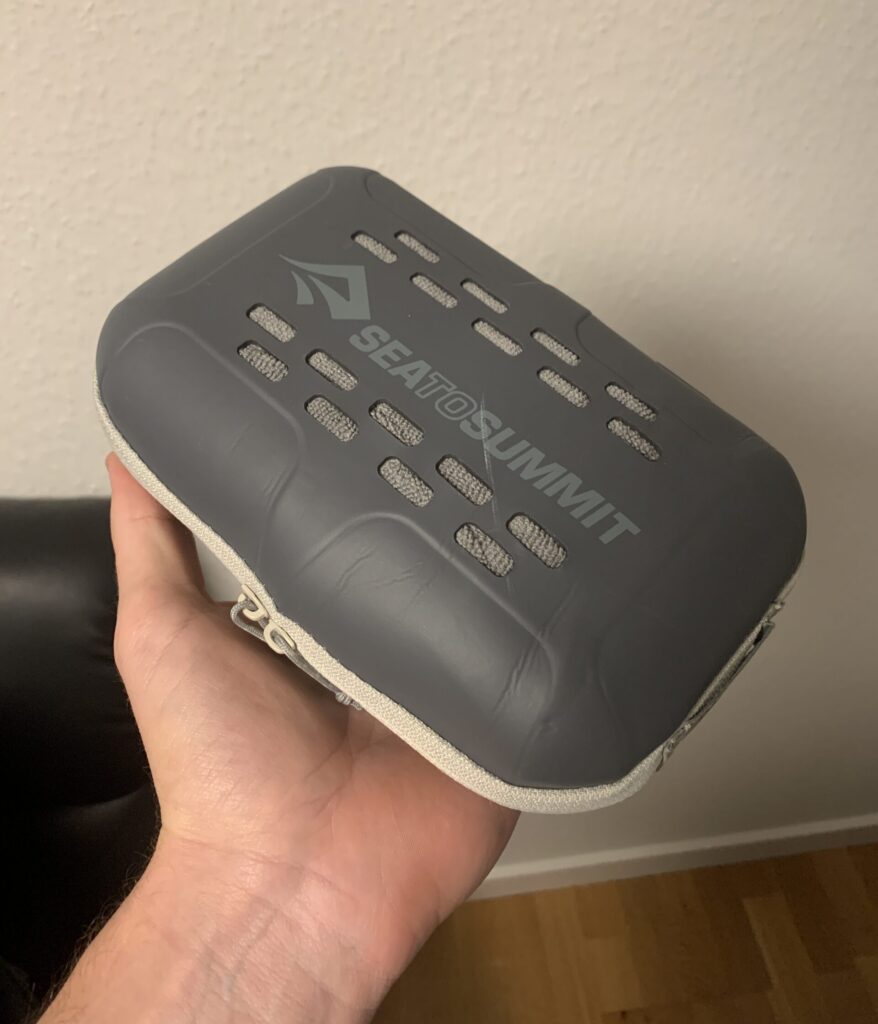
And the places they don’t it’s rarely expensive to get a clean towel without the responsibility of washing it.
Also if you’re changing accommodation often as most backpackers do, chances are it never really gets to dry completely, making it smell less hygienic.
Universal Power Adapters
Except if you know you’re planning to a destination with another electric socket, don’t bring this.
This might seem like a no-brainer, and maybe it’s just me, but the option of heavy international sockets compatible with all sockets in the world, is often a big and heavy over-kill.
In case you’re traveling to countries with another socket, you can buy cheap, small, and lightweight single sockets targeted to fit them exactly.
Another pro of going with a light power adapter is that it’s less likely to fall out of wall sockets.
How to Decrease Flight Luggage Expenses
The Waistbag Hack
I elaborate on this in my other guide: How Much Can You Fit in a 20-Inch Suitcase?
But here’s a quick summary:
You can get a few extra liters by carrying things in a waist bag.
My impression from my travels is that it’s seen more as a personal accessory rather than a bag, hence why it’s often ignored by airlines.
Only very rarely I’ve been asked to store it in the overhead department, but never during check-in or boarding.
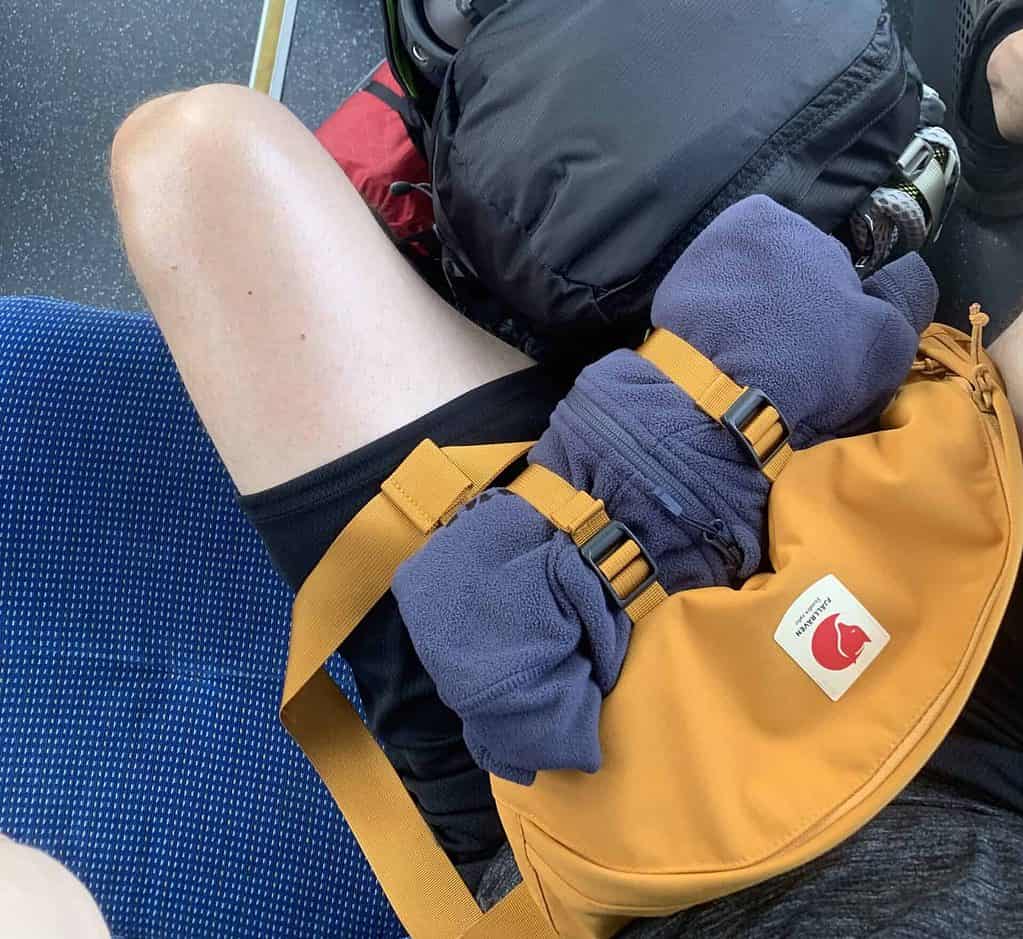
Wear as Much as Possible on the Flight
Just be careful that you don’t look like someone that is about to step on the scene for a fashion show. Otherwise, you might unintentionally get shipped to Milan, Italy.
Spread the Weight if You’re Traveling in a Group
If you’re traveling in a group and the primary reason you’re traveling light is due to cutting flight expenses, this is a good way to save some dough.
How To Weigh Your Luggage at Home
The good news is you don’t need a baggage weight. An ordinary scale will do just fine.
Simply weigh each of your luggage by first weighing yourself, and then weighing yourself afterward carrying the luggage.
The difference will reveal the weight.
It Takes Practice
While reading books or guides on how to pack light is helpful, you’ll probably end up packing things you don’t need despite your best intentions.
On my last 5 month’s world trip across Asia and Europe, I packed a lot of things I was convinced I needed.
Such as camping gear, an electric socket, a travel towel, etc. But I ended up shipping a large box back to Denmark from Turkey once I had the chance.
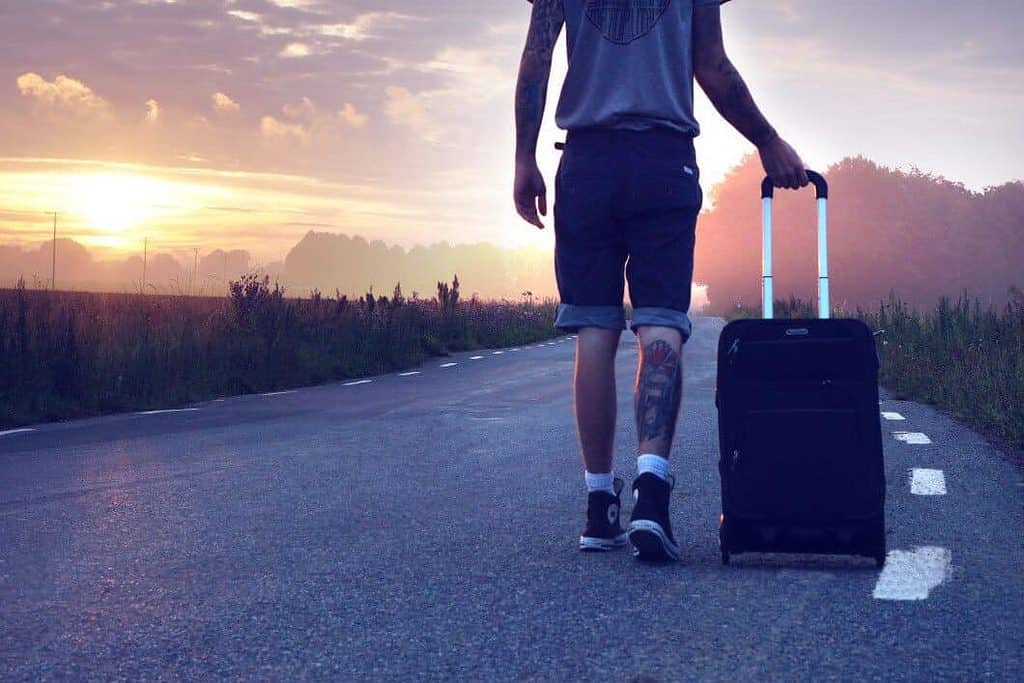
And while that may sound like a smart option, it’s not without headaches.
As mentioned earlier there are the price, worries, and limits on what you can send back. But also you’ll most likely have to deal with the toll in your home country.
Which is exactly what happened to me too.
I almost missed the deadline for submitting a required form due to a missed letter in the mailbox at home. If that had happened, all my stuff would have been shipped back to Turkey and never seen again.
Also, I had to prove that it was my items by sending my flight tickets and receipts for some of the items.
So to summarize this; give yourself some slack, do your best, and learn from your mistakes every time you pack for a trip.





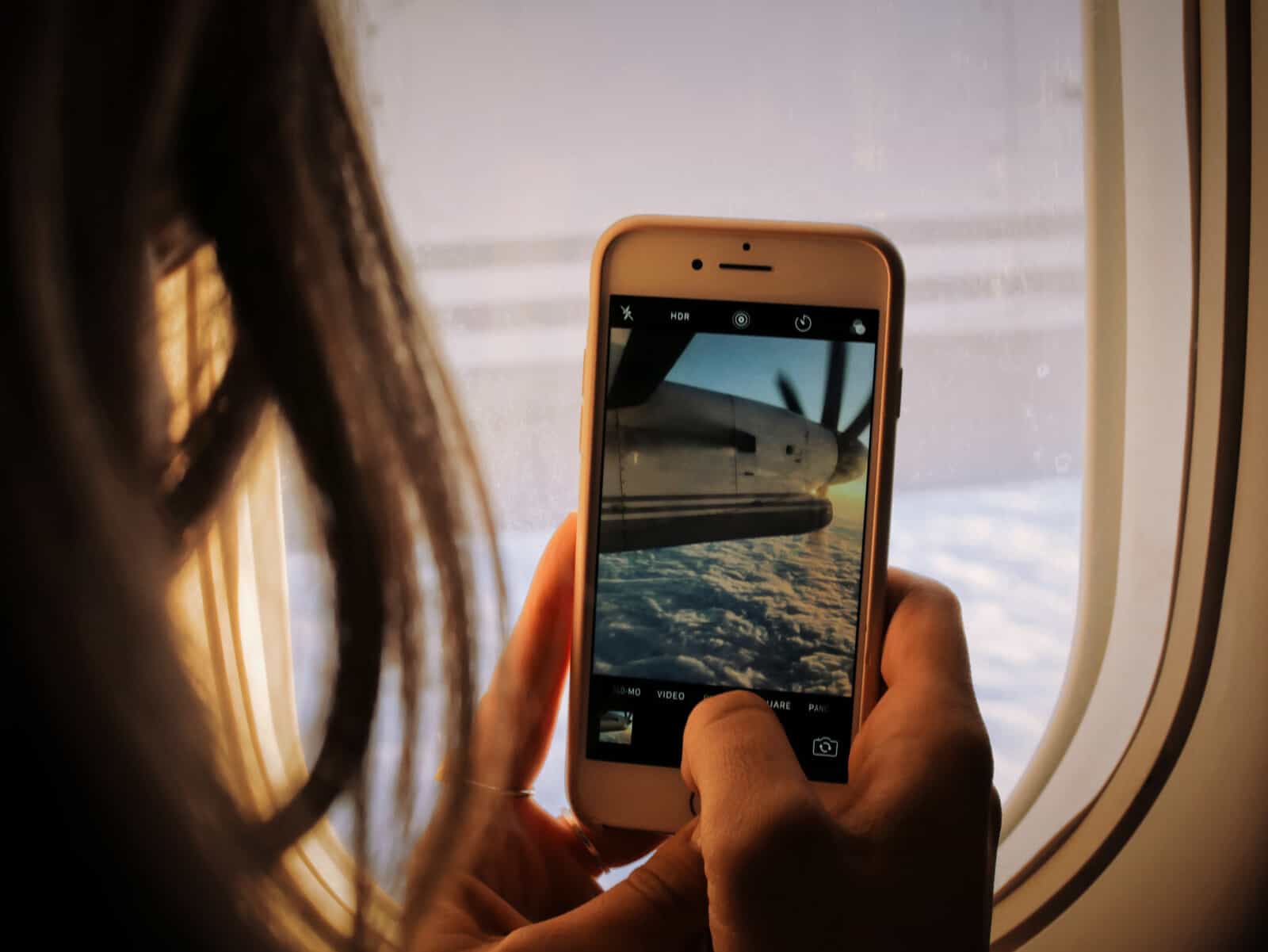
Leave a reply